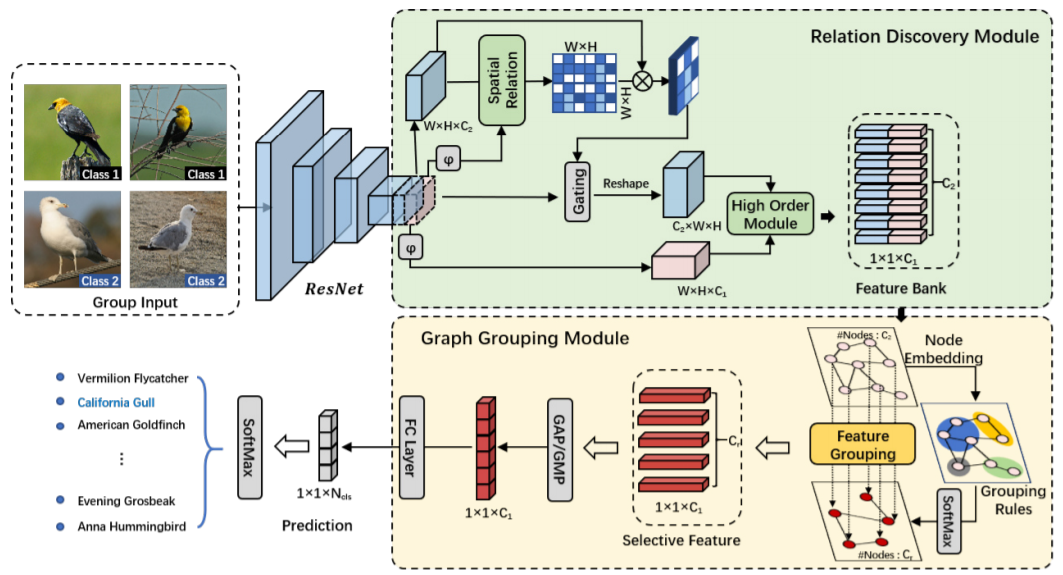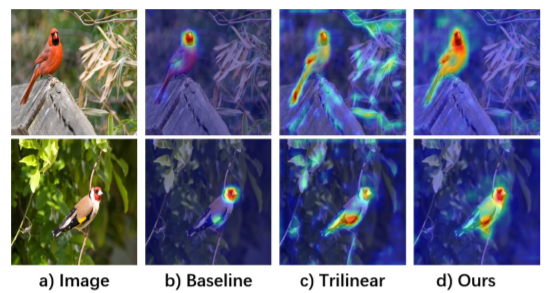
Three modules of GaRD

Three modules of GaRD
Fine-grained object recognition aims to learn effective features that can identify the subtle differences between visually similar objects. Most of the existing works tend to amplify discriminative part regions with attention mechanisms. Besides its unstable performance under complex backgrounds, the intrinsic interrelationship between different semantic features is less explored. Toward this end, we propose an effective graph-based relation discovery approach to build a contextual understanding of highorder relationships. In our approach, a high-dimensional feature bank is first formed and jointly regularized with semantic- and positional-aware high-order constraints, endowing rich attributes to feature representations. Second, to overcome the high-dimension curse, we propose a graphbased semantic grouping strategy to embed this high-order tensor bank into a low-dimensional space. Meanwhile, a group-wise learning strategy is proposed to regularize the features focusing on the cluster embedding center. With the collaborative learning of three modules, our module is able to grasp the stronger contextual details of fine-grained objects. Experimental evidence demonstrates our approach achieves new state-of-the-art on 4 widely-used fine-grained object recognition benchmarks.

BibTex Citation
@InProceedings{Zhao_2021_CVPR,
title = {Graph-Based High-Order Relation Discovery for Fine-Grained Recognition},
author = {Zhao, Yifan and Yan, Ke and Huang, Feiyue and Li, Jia},
booktitle = {Proceedings of the IEEE/CVF Conference on Computer Vision and Pattern Recognition (CVPR)},
pages = {15079-15088}
month = {June},
year = {2021},
}